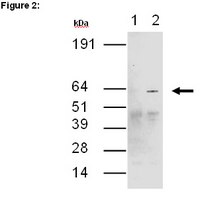Expression of transcription factors and matrix genes in response to serum stimulus in vascular smooth muscle cells.
André Markmann,Jürgen Rauterberg,Peter Vischer,Horst Robenek,Frank Echtermeyer,Heike Will,Daniela G Seidler,Marian F Young,Hans Kresse
European journal of cell biology
82
2003
Afficher le résumé
During atherogenesis vascular smooth muscle cells are converted from a contractile into a synthetic phenotype characterized by enhanced matrix production. The transcription factors Gax and GATA-6 are considered negative, and Oct-1 positive regulators of the synthetic phenotype. Since the phenotype transition can be induced by culturing the cells with serum, we followed the expression of Gax, GATA-6 and Oct-1, integrins and matrix genes in quiescent porcine vascular smooth muscle cells after serum application. Comparisons were made between enzymatically released primary smooth muscle cells and cells grown out from explants of the medial layer of porcine aorta. The serum-mediated down-regulation of Gax was more intense than that of GATA-6, and stronger in explant-derived than in primary cells. Serum was without influence on the expression of Oct-1. Changes in the expression of the transcription factors preceded the induction of integrin alpha2 and the down-regulation of decorin, while mRNAs for laminin beta1 and osteopontin rose immediately after serum stimulation. Primary cells reacted more rapidly than explant cells with respect to changes in laminin isoforms. Studies with a Gax-expressing adenovirus indicated that among all the gene products tested only the expression of integrin alpha2 responded to Gax induction. Thus, our data show that i) Gax should be considered a transcription factor being directly responsible for only few aspects of the phenotypic conversion of smooth muscle cells and that ii) explant cells may represent a subpopulation of smooth muscle cells, which differ from the total population of smooth muscle cells, as obtained in primary culture, in their response to serum stimuli. | 12691261
 |










